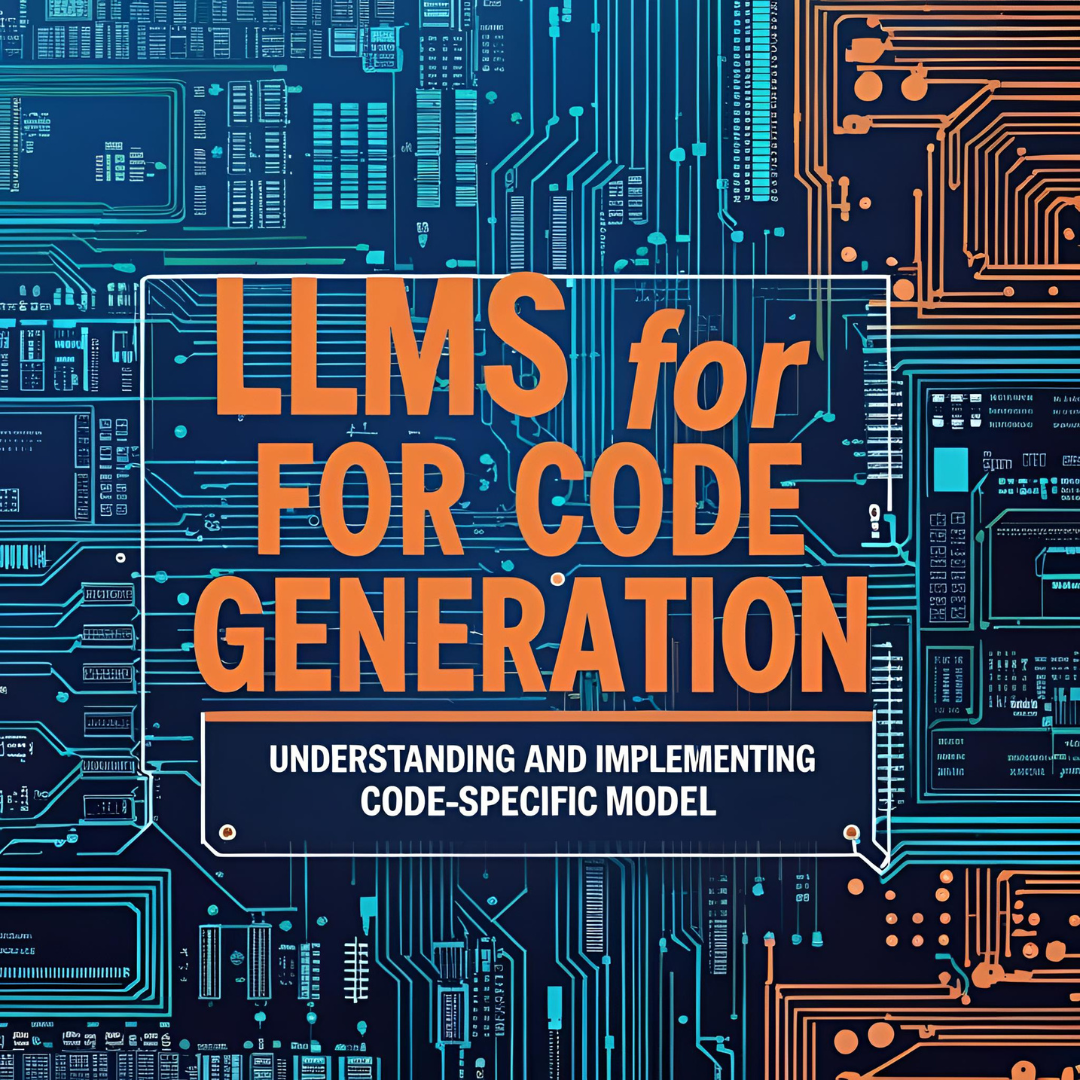Introduction
Large Language Models (LLMs) have revolutionized the software development landscape, transforming how developers write, debug, and optimize code. The emergence of code-specific models has opened new possibilities for automated programming assistance, from simple code completion to complex algorithm generation. This post explores the fundamentals of LLMs in code generation and provides practical insights for implementing code-specific models.
Understanding Code-Specific LLMs
What Makes Code Different from Natural Language?
Code has unique characteristics that distinguish it from natural language:
- Structured Syntax: Programming languages follow strict grammatical rules with precise syntax
- Semantic Precision: Small changes can dramatically alter program behavior
- Contextual Dependencies: Variables, functions, and imports create complex relationships
- Multiple Languages: Different programming languages have distinct paradigms and conventions
- Execution Context: Code must be not just syntactically correct but also functionally viable
Popular Code Generation Models
Several specialized models have emerged for code generation:
- GitHub Copilot (Codex): Built on GPT-3 architecture, trained specifically on code repositories
- CodeT5: Encoder-decoder model designed for code understanding and generation tasks
- InCoder: Supports both left-to-right and fill-in-the-middle generation
- CodeGen: Autoregressive model trained on natural language and programming languages
- StarCoder: Open-source model trained on permissively licensed code from GitHub
Architecture and Training Approaches
Model Architectures
Decoder-Only Models (GPT-style)
- Excellent for code completion and generation
- Examples: Codex, CodeGen, StarCoder
- Suitable for autoregressive code generation
Encoder-Decoder Models (T5-style)
- Better for code translation and transformation tasks
- Examples: CodeT5, PLBART
- Effective for code summarization and documentation
Fill-in-the-Middle (FIM) Models
- Can generate code with both left and right context
- Examples: InCoder, SantaCoder
- Useful for code infilling and editing
Training Strategies
Pre-training Data Sources:
- Open-source repositories (GitHub, GitLab)
- Documentation and technical blogs
- Stack Overflow and programming forums
- Programming tutorials and educational content
Training Objectives:
- Causal Language Modeling: Standard left-to-right generation
- Fill-in-the-Middle: Learning to complete code with bidirectional context
- Multi-task Learning: Combining code generation with related tasks like documentation
Implementation Guide
Setting Up a Code Generation Pipeline
# Example using Hugging Face Transformers
from transformers import AutoTokenizer, AutoModelForCausalLM
import torch
class CodeGenerator:
def __init__(self, model_name="microsoft/CodeGPT-small-py"):
self.tokenizer = AutoTokenizer.from_pretrained(model_name)
self.model = AutoModelForCausalLM.from_pretrained(model_name)
def generate_code(self, prompt, max_length=150, temperature=0.7):
inputs = self.tokenizer.encode(prompt, return_tensors="pt")
with torch.no_grad():
outputs = self.model.generate(
inputs,
max_length=max_length,
temperature=temperature,
do_sample=True,
pad_token_id=self.tokenizer.eos_token_id
)
generated_code = self.tokenizer.decode(outputs[0], skip_special_tokens=True)
return generated_code[len(prompt):]
# Usage example
generator = CodeGenerator()
prompt = "def fibonacci(n):"
generated = generator.generate_code(prompt)
print(generated)
Fine-tuning for Specific Domains
To adapt a pre-trained model for specific programming tasks:
- Data Collection: Gather domain-specific code examples
- Data Preprocessing: Clean and format code with proper tokenization
- Fine-tuning Setup: Configure training parameters and objectives
- Evaluation: Use code-specific metrics like CodeBLEU and execution accuracy
Evaluation Metrics
Syntactic Correctness:
- Parsing success rate
- Syntax error detection
Semantic Accuracy:
- Unit test pass rates
- Functional correctness evaluation
- CodeBLEU scores
Code Quality:
- Complexity analysis
- Style consistency
- Documentation completeness
Best Practices and Considerations
Prompt Engineering for Code Generation
Effective Prompting Strategies:
- Context Provision: Include relevant imports, function signatures, and documentation
- Example-Driven: Provide similar code examples when possible
- Specification Clarity: Clearly describe the expected functionality
- Constraint Definition: Specify performance requirements and limitations
Example of Good Prompting:
# Context: Building a REST API with Flask
# Task: Create an endpoint for user authentication
# Requirements: Return JWT token on successful login
from flask import Flask, request, jsonify
from flask_jwt_extended import create_access_token
import bcrypt
app = Flask(__name__)
@app.route('/login', methods=['POST'])
def login():
# Generate code here
Handling Code Generation Challenges
Common Issues and Solutions:
- Hallucination: Models may generate plausible but incorrect code
- Solution: Implement validation layers and testing frameworks
- Context Length Limitations: Large codebases exceed model context windows
- Solution: Use retrieval-augmented generation (RAG) approaches
- Security Concerns: Generated code may contain vulnerabilities
- Solution: Integrate security scanning and code review processes
- Language-Specific Nuances: Models may struggle with language-specific idioms
- Solution: Fine-tune on language-specific datasets
Advanced Techniques
Retrieval-Augmented Code Generation
Combine LLMs with code search capabilities:
- Code Indexing: Create searchable indexes of relevant code snippets
- Similarity Search: Find relevant examples based on the current context
- Context Injection: Include retrieved examples in the generation prompt
- Iterative Refinement: Use feedback loops to improve generation quality
Multi-Modal Code Generation
Integrate different types of input:
- Natural Language + Code: Combine descriptions with partial implementations
- Documentation + Examples: Use API documentation as context
- Visual Diagrams: Generate code from flowcharts or UML diagrams
Code Review and Testing Integration
Implement automated validation:
def validate_generated_code(code, test_cases):
"""Validate generated code against test cases."""
try:
# Execute code in sandboxed environment
exec_globals = {}
exec(code, exec_globals)
# Run test cases
results = []
for test_case in test_cases:
result = eval(test_case, exec_globals)
results.append(result)
return all(results)
except Exception as e:
return False, str(e)
Future Directions and Research Areas
Emerging Trends
- Multimodal Code Generation: Incorporating visual and textual inputs
- Interactive Code Generation: Real-time collaboration between developers and AI
- Domain-Specific Models: Specialized models for specific programming domains
- Code Understanding: Models that can explain and analyze existing code
Research Opportunities
- Explainable Code Generation: Understanding why models make specific choices
- Adaptive Learning: Models that learn from user feedback and corrections
- Cross-Language Code Translation: Automated porting between programming languages
- Code Optimization: AI-assisted performance improvement
Conclusion
LLMs for code generation represent a significant advancement in developer productivity tools. While current models show impressive capabilities, successful implementation requires careful consideration of model selection, prompt engineering, and validation strategies. As the field continues to evolve, we can expect more sophisticated models that better understand code semantics and generate more reliable, secure, and efficient code.
The key to successful implementation lies in understanding the specific requirements of your use case, choosing appropriate models and techniques, and implementing robust validation and testing frameworks. By following best practices and staying updated with the latest developments, developers can effectively leverage LLMs to enhance their coding workflows and build better software faster.
This post provides a comprehensive overview of LLMs for code generation. For specific implementation details and the latest model releases, refer to the respective documentation and research papers of the mentioned models and frameworks.


Leave a Reply